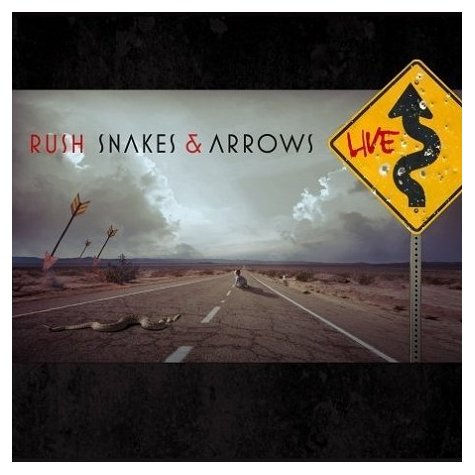
Snakes and Arrows Live(2008)

Disc One
1.Limelight
2.Digital Man
3.Entres Nous
4.Mission
5.Free Will
6.The Main Monkey Business
7.The Larger Bowl
8.Secret Touch
9.Circumstances
10.Between the Wheels
11.Dreamline
Disc Two
1.Far Cry
2.Workin' Them Angels
3.Armor and Sword
4.Spindrift
5.The Way the Wind Blows
6.Subdivisions
7.Natural Science
8.Witch Hunt
9.Malignant Narcissism/De Slagwerker
10.Hope
11.Distant Early Warning
12.The Spirit of Radio
13.Tom Sawyer
14.One Little Victory
15.A Passage to Bangkok
16.YYZ
No matter where one stands on the question of Rush’s place in the pantheon of rock’s most enduring acts, there can be little argument that they’ve firmly cemented their status as one of the most beloved live bands of the past thirty years. From their earliest days, the band had adhered with admirable rigidity to a self-imposed doctrine: one live album for every four studio efforts, each one serving as a kind of closing chapter to a particular era. It worked. Until, of course, it didn’t.
In 2003, Rush took their first major detour from this model with the release of the triple-disc monolith Rush in Rio, an ambitious document of an entire concert—warts, wonder, and all. It marked the first time the group had offered a complete show on CD, and, as these things go, it was largely seen as a triumph. So, when the band followed Vapor Trails with only one additional studio album (not including Feedback an EP of covers) and then proceeded to release yet another full-length live record, eyebrows may have been raised—though, truth be told, not very high. For Rush, this sort of indulgence is practically tradition.
What perhaps justified this otherwise puzzling move was the makeup of the tour itself. Nearly half the set consisted of either newly-minted material or deep cuts that had long since vanished from the live repertoire—some absent for over twenty-five years. Of course, the warhorses were still here (The Spirit of Radio, YYZ, Tom Sawyer, et al.), but what gave this release its character was the presence of tracks that, until now, had never been granted the dignity of a live release. It’s tempting to imagine the band, management, or both, simply assuming (rightly) that the diehards would flock to the register regardless—and thus they dispensed with any creative flourish in naming the album. They simply tacked the word Live onto the end of the last studio title and called it a day. Everyone knew exactly what they were getting.
One might argue that the “classics” don’t sound particularly different from the last several times they were played—and one would be right. But that’s hardly the point. This wasn’t about reinvention. This was about preservation. A full document of a show that, for once, truly felt different. And for Rush fans, that alone made it essential.
Go back to the main page
Go to the Next Review